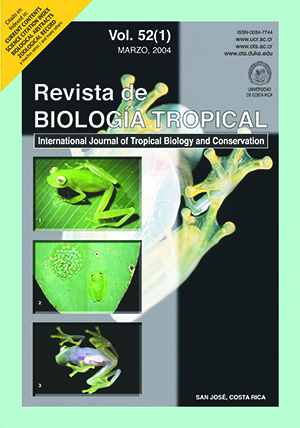Resumen
En este trabajo se presenta la composición y el porcentaje de ácidos grasos de tres poblaciones mexicanas de Artemia franciscana de aguas epicontinentales; dos provienen de lugares silvestres (Coahuila y San Luis Potosí) y una (Texcoco) de un cultivo alimentado con Spirulina. Para la determinación de los ácidos grasos de cada población se extrajeron los lípidos totales por el método soxhlet y se esterificaron los ácidos grasos; posteriormente, mediante cromatografía de gases se determinó la composición y el porcentaje de los mismos. Los resultados muestran que la población de Texcoco contiene los seis ácidos grasos relevantes para peces y crustáceos en la acuicultura (16:0; 16:1; 18:1; 18:2w6; 18:3w3 y 20:5w3); mientras que la Artemia de San Luis Potosí resultó ser la más pobre en estos ácidos y la población de Coahuila, aunque mostró un perfil amplio, carece del ácido linolénico, ácido esencial y precursor de otros. Al comparar estos resultados, con datos ecológicos de estas tres poblaciones publicados previamente, se puede señalar que el ambiente es determinante para este crustáceo ya que Artemia de Texcoco provenía de un cultivo alimentado con Spirulina y fue la población que mostró mayor variedad de ácidos grasos. Las otras dos poblaciones son silvestres, con hábitats diferentes, la Artemia de Coahuila vive en aguas ricas en sulfatos y la de San Luis Potosí habita en vasos evaporadores de sal construidos con piedra de cantera y por lo tanto con escaso crecimiento de fitoplancton, ambas poblaciones mostraron deficiencias de ácidos grasos esenciales, sobre todo ésta última.
Citas
Castro, M.G., M.J. Castro, A.R. De Lara, R.C. Gallardo, O.I. Salazar & B. Sánchez. 1989. Características biométricas generales, modo de reproducción y aislamiento reproductivo de la población silvestre de Artemia sp. de las Salinas de Hidalgo, San Luis Potosí. Rev. Latin. Acui. 39: 18-25.
Castro, B.T. 1993. Biología y cultivo de Artemia franciscana en el Ex - lago de Texcoco, de Ecatepec, Estado de México. Tesis doctoral, Universidad Nacional Autónoma de México, México. 72 p.
Castro, B.T., M.J. Castro, S.A. Malpica & A.R. De Lara. 1997. Características morfométricas y calidad de los quistes de Artemia sp. (Crustacea: Anostraca), habitante de aguas sulfatadas de Coahuila, México. Rev. Cien. Mar. 23 (4): 491-503.
Lehninger, A.L. 1984. Bioquímica. Omega, Barcelona, España. 117 p.
Stryer, L. 1995. Bioquímica. Reverté. 1009 p.
Watanabe, T., F. Oowa, C. Kitajima & S. Fujita. 1978. Nutritional quality of brine shrimp Artemia salina as a living feed from the view point of essential fatty acids for fish. Bull. Jap. Soc. Sci. Fish. 44: 1115-1121.
Watanabe, T., F. Oowa, C. Kitajima, & S. Fujita. 1980. Relationship between dietary value of brine shrimp Artemia salina and their content of w3 highly unsaturated fatty acids. Bull. Jap. Soc. Sci. Fish. 46: 35-41.
Zar, J.H. 1999. Biostatistical analysis. Prentice. 123 p.

Esta obra está bajo una licencia internacional Creative Commons Atribución 4.0.
Derechos de autor 2004 Revista de Biología Tropical

